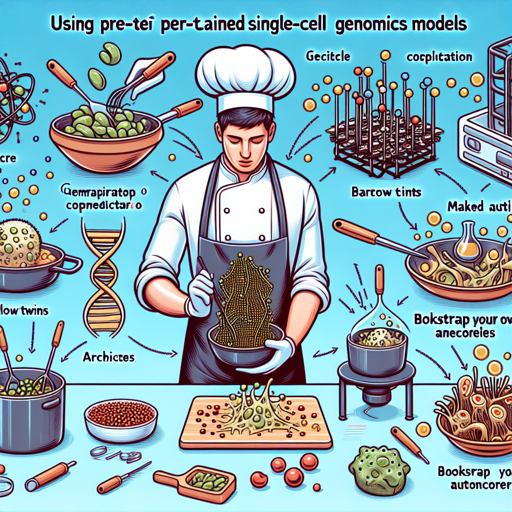In the ever-evolving landscape of genomics, single-cell analysis has emerged as a crucial frontier, offering deeper insight into cellular behaviors. This blog post will walk you through how to effectively utilize pre-trained models based on notable architectures like Barlow Twins, Bootstrap Your Own Latent, and Masked Autoencoder. We will guide you on leveraging these models for your genomic projects and provide troubleshooting tips to smooth your journey.
Understanding the Pre-trained Models
Think of using these pre-trained models as hiring an experienced chef to prepare your favorite dish. While you could gather the ingredients and follow a recipe from scratch, having someone who already knows the intricacies saves you time and effort. In a similar way, these models have been pre-trained on vast datasets, allowing you to leverage their learned features for your single-cell genomic analyses.
Key Components of the Models
- Barlow Twins: A method that focuses on contrastive learning. It teaches the model to differentiate between various representations of input data.
- Bootstrap Your Own Latent: This model leverages the idea of self-supervised learning to enhance the embedding space effectively.
- Masked Autoencoder: This architecture learns by reconstructing parts of the input data, effectively enabling it to learn meaningful representations.
How to Use the Models
To begin using these models, follow these simple steps:
- Make sure your dataset aligns with the genes specified in the
var.parquetfile. The order and the exact set of genes must match to utilize the pre-trained model effectively. - If your dataset diverges from these specifications, consult the repositories below to train a model tailored to your unique data:
Training and Adaptation
Details regarding training adaptations to single-cell data can be found in our paper: Delineating the Effective Use of Self-Supervised Learning in Single-Cell Genomics. This will provide insights on the methodologies applied and how you can replicate our findings.
Troubleshooting Your Model Utilization
During your journey with single-cell genomics models, you may encounter some bumps along the way. Here are a few troubleshooting ideas:
- Error: Gene Order Mismatch – Ensure that the genes from your dataset appear in the same order as specified in the
var.parquetfile. This is crucial for the model’s performance. - Model Performance Issues – If the model isn’t performing as expected, consider checking if the training dataset is well-curated and representative of your biological conditions.
- Custom Dataset Training – If you need to train the model on a custom dataset, follow the guidance provided in the repositories mentioned earlier.
For more insights, updates, or to collaborate on AI development projects, stay connected with fxis.ai.
Final Thoughts
At fxis.ai, we believe that such advancements are crucial for the future of AI, as they enable more comprehensive and effective solutions. Our team is continually exploring new methodologies to push the envelope in artificial intelligence, ensuring that our clients benefit from the latest technological innovations.
By following this guide, you will be well on your way to effectively utilizing pre-trained single-cell genomics models in your research efforts. Happy analyzing!

